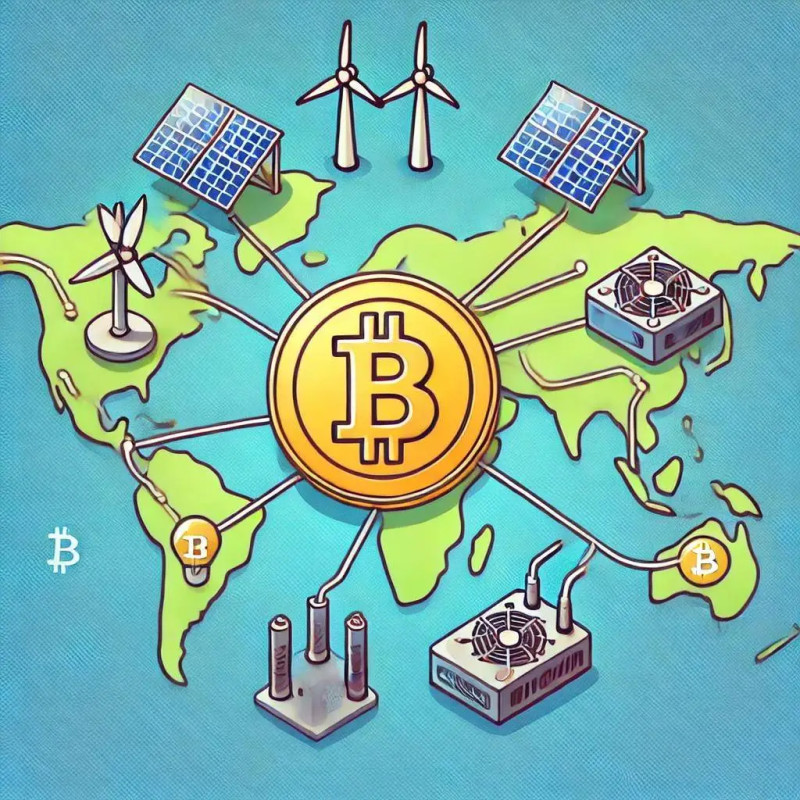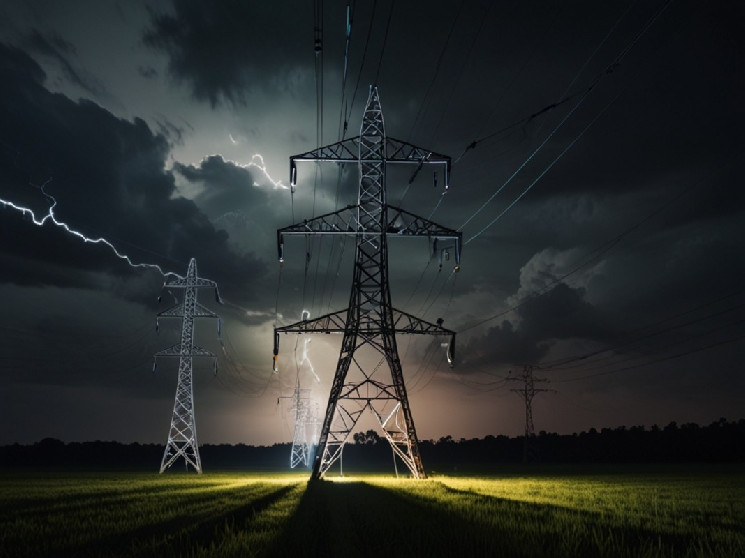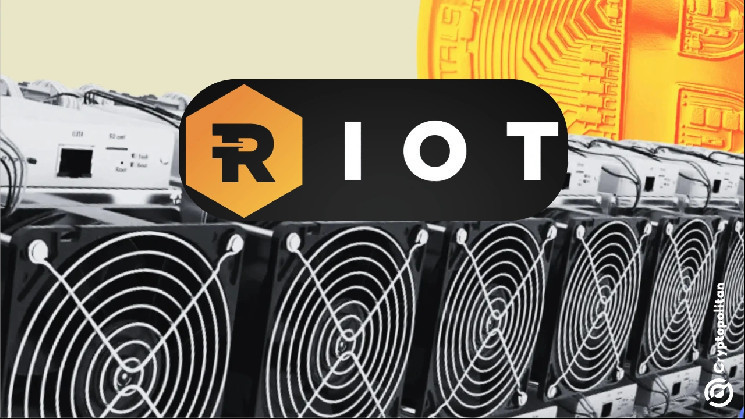Early in our enthusiastic about the interplay between bitcoin and energy it grew to become apparent to me that the value of bitcoin was basically underpinned by the quantity of energy that went into producing the bitcoin. As with any free market system, the value of a widget (on this case bitcoin) is set by the value of producing the widget plus the numerous ranges of revenue margin wanted to get from manufacturing to the shopper. If somebody has an modern means to produce one thing that nobody else can and there’s a massive demand for this product then they’ve the means to extract extra revenue based mostly upon the shortage of the provide relative to the demand. If the innovation will not be sufficiently proprietary then others will recognise this arbitrage alternative and search to fulfill some or all of the demand. Over some interval of time, we count on the ecosystem of producers to compete with one another for demand till a degree is reached the place the value of the product displays the minimally acceptable degree of revenue margin for all members in the manufacturing, provide, and gross sales chain. Additional improvements in manufacturing approach, materials sourcing, or labour prices could give a short lived benefit to 1 producer over others and they will take pleasure in a interval of higher profitability – that’s till the different producers implement related benefits and the total value for the product will get pushed decrease.
This is what Adam Smith known as the invisible hand or extra fashionable financial thinkers name the financial equilibrium precept. If actors in a really free market system (one thing we seldom really obtain) act in their very own pursuits by chasing income, these actions will in the end result in a societal profit by means of the satisfaction of demand at the level of optimum financial value. While we could by no means attain a really optimum level of financial exchange of value, we definitely see the profit of reducing costs and growing high quality (particularly in technical phrases) in industries starting from transportation to computing. My father purchased an IBM PS/2 Model 25 with a 16 color show and 10MB of space for storing in the late 1980’s for round $7,000. Today, forty years later, a $70 Asian smartphone exceeds each functionality of that IBM by many orders of magnitude for 1% of the value. This is one facet of the deflationary impact of know-how that Jeff Booth discusses in his guide The Price of Tomorrow.
While a computing machine can enhance in capabilities by 100,000% whereas reducing in value by 99% in the house of 40 years, why can’t we are saying the identical factor of the car?

I drive a 1977 Range Rover that value round $14,000 when it was new. Nearly 50 years later, the present mannequin of Range Rover prices about 10 instances that quantity however delivers solely marginally elevated capabilities. Why did vehicles not expertise the identical technological deflationary impact as computer systems? In massive half as a result of the value of the uncooked supplies to supply a automobile together with metal, aluminium, copper have all elevated in that very same time-frame. In addition, the value of working a manufacturing facility to supply automobiles and the value of transporting a 2 tonne automobile from manufacturing to the level of sale have all gone up considerably in that interval of time.
While you may’t get a comparable Asian SUV model new for $14,000 at the moment, you will get a really succesful SUV for about twice that quantity with considerably higher consolation and technical options versus my spartan 70’s off roader. In 1977 the most simple VW Beetle value round $3,000. Similar low-end automobiles at the moment from Asian manufactures with equally sparse specs are usually round the $6,000 value level. What is tough to see with these numbers is the inflationary impact of the devaluation of foreign money – on this case the US greenback. A greenback in 1977 successfully had the spending energy of $5.19 at the moment or, stated one other approach, a 2024 greenback has the identical spending energy of $0.19 in 1977. That is an 80% discount in spending energy. This implies that a $6,000 primary automobile in 2024 can be priced at $1,140 in 1977 {dollars}. By the approach, the $7,000 greenback IBM would have value over $35,000 in 2024 {dollars} making the $70 smartphone an absolute steal!
What is it about a pc that allowed its technical deflationary impact to to date outpace inflation whereas the car couldn’t obtain the identical end result? In quick, the motive is twofold: energy and the shortage of assets. It takes about 278kWh of energy and 120g of uncooked supplies to supply one smartphone. A automobile takes round 17,000kWh of energy and 5,000,000g of uncooked supplies to be produced (in keeping with MDPI). Both merchandise will find yourself with an analogous revenue margin for the producer of roughly 10%. While know-how can resolve lots of challenges of effectivity or miniaturisation, it can’t basically scale back the amount of bodily and energy commodities that want to enter the manufacturing of one thing the measurement of a automobile.
In the identical approach, bitcoin has a elementary value of manufacturing that’s pushed by the quantity of energy required to supply one bitcoin. While we’re frequently making progress with respect to the effectivity of the machines we use to transform energy into bitcoin (we’ve got seen a rise in effectivity of round 83% from 2019-2024), the development of the community hashrate has nonetheless pushed up the quantity of energy wanted to supply 1 bitcoin to round 800,000kWh. That sets the intrinsic value of a Bitcoin produced in late 2024 at round $66,000 together with a revenue margin of roughly 10% for the common producer.
Does that imply that the present value of bitcoin is set solely by the value of producing a bitcoin?
Of course not; nevertheless it does play a important function in setting the value of a bitcoin. The value of manufacturing and the present market value have reached a degree of equilibrium the place the producer is ready to make sufficient margin to proceed to supply in their very own self pursuits whereas the market is ready to profit from a reasonably priced product. The superb factor about the bitcoin community is that it’s one of the solely true free-markets in existence. Absent the means for an actor to monopolise or governments to exert management over the market, the invisible hand will proceed to push these two forces in the direction of this state of equilibrium. This implies that we are able to perceive the true value of a bitcoin by understanding the value of the energy required to supply a bitcoin. In this fashion, energy successfully values bitcoin.
Since I’ve already introduced you into my worldview of enthusiastic about most issues from the perspective of a Land Rover, let me proceed with that method as we think about the different aspect of this Joule Paradox. As I stated, I drive a 1977 Range Rover (what’s now known as a Range Rover Classic Suffix D). I purchased the truck right here in Kenya about 5 years in the past for proper round $5,000. It was fully intact, unmolested, and 100% rust free. It was the equal of what’s also known as a barn discover – an ideal specimen for a practical restoration. In the Kenyan market I paid a bit above the going price for the same automobile attributable to its situation. If I had been to aim to buy an analogous automobile in the UK market (assuming you could find a rust-free instance nonetheless) it will have value me considerably extra. Fully restored in authentic situation in Kenya the truck is likely to be value $15,000 on the finest day, a superbly restored instance in the UK would probably value 10 instances that quantity. Why is there such a disparity in the value of two primarily equivalent issues? In quick, it’s as a result of of the isolation of economies.
The financial pool that I’ve to work inside right here in Kenya doesn’t value this automobile the identical approach that the financial pool in the UK does. If I may simply ship the truck throughout my Starlink connection to the UK, I may make lots of cash from this arbitrage alternative. However, automobile delivery doesn’t work like that. For me to maneuver this truck from my Kenyan financial pool to the UK financial pool would require an incredible quantity of time (coping with authorities paperwork on each ends), transportation expense, and a large number of unexpected costly points in ensuring that the high quality of my Kenyan-performed work would meet the way more rigorous necessities to function a automobile in the UK. Would it make monetary sense? Possibly. Is it economically value the effort for me? Definitely not. Plus, I actually love the truck so I emotionally over value it.
Energy suffers from this identical isolation of economies. If a pure gasoline producer in West Texas is attempting to promote electrical energy into their regional pool at the identical time that the wind is blowing and the solar is shining throughout the state, the value for his or her unit of energy can really go destructive. This implies that they must pay somebody to take their energy. At the exact same cut-off date, somebody charging their electrical automobile in California could also be paying a peak-demand surcharge for electrical energy that doubles their value of energy. The Californian Tesla proprietor would very a lot like to have cheaper energy from Texas and the Texas producer would like to cost even a couple of cents for his or her energy to anybody that may purchase it. Unfortunately, these two energy swimming pools function in isolation. You can’t transfer a joule of energy from the Texas pool to the California pool and not using a lot of authorities paperwork and transportation prices. The arbitrage alternative can’t be realised.

Rural energy station with bitcoin mining in Zambia.
The identical is true for a small hydro energy producer in Northwestern Zambia, they’re remoted in a really small financial pool. They can produce extra energy than they will promote to the area people however there isn’t a one else aside from the neighborhood to purchase their electrical energy. Even in the event that they provided it for $0.01, nobody would take it. Meanwhile, 100km away, one other village is being charged practically $1.00 per kWh to get electrical energy from a photo voltaic mini-grid. Those villagers would like to have some low-cost electrical energy. Unfortunately, you may’t transfer a joule of energy throughout 100km of bumpy, dusty African roads. The arbitrage alternative is misplaced attributable to financial isolation.
Although I doubt that Satoshi considered it this fashion, the bitcoin mining community is successfully an adapter to attach any remoted energy pool into a worldwide market. By merely plugging in a mining machine and connecting it to the web, now you can promote your electrical energy to an at all times keen purchaser. These two easy items of know-how permit for energy swimming pools to be linked in a approach that hasn’t actually existed earlier than. Bitcoin is a non-government-controlled, internet-enabled, real-time energy market that’s open 24/7, twelve months a yr.
At any cut-off date, the invisible hand of the market will decide what’s the going hashprice. This is the quantity of bitcoin paid to a miner for submitting 1TH/s of compute energy for 1 day. This value represents how a lot a miner can earn from working their machines and – because of mining swimming pools – this quantity is payable in very small items of work. If you run a 100TH/s machine for 1 hour then you’ll earn 1/twenty fourth of the hashprice paid on to your bitcoin pockets. This is true anytime of the day and from wherever on earth. Using this hashprice and figuring out the effectivity of your mining machine, you may know with absolute certainty how a lot the bitcoin community is keen to pay you for any kWh of electrical energy that you just need to promote.
As an instance, as of 7:34am East Africa Time on October fifth, 2024, the bitcoin community can pay you $0.078 per kWh if you’re utilizing a 24J/T Whatsminer M50s and $0.103 per kWh if you’re utilizing a 18J/T Antminer S21. Those numbers will fluctuate with the change in bitcoin value, however then it’s as much as you to resolve if you will get a greater supply out of your native financial pool. Willing purchaser, keen vendor as they are saying.

By performing as the real-time market for internet-enabled energy, the bitcoin community permits us to finish the Joule Paradox: energy sets the value of bitcoin and bitcoin sets the value of energy.
Notice that I stated value and not value. An previous pal of mine used to ceaselessly say that value is what you pay and value is what you get. The identical is true right here. The value of a bitcoin relies upon the energy inputs and manufacturing prices however the market determines the value. Similarly, bitcoin determines what the minimal value for a unit of electrical energy is however the vendor determines whether or not they may settle for that value or promote to another person for extra.
In enthusiastic about the relationship between bitcoin and energy inside this paradox, we begin to see why the proof-of-work mannequin that Satoshi selected to implement and the system of automated market regulation by means of the issue adjustment is so genius. If both of these options was lacking from bitcoin then we might not have the extremely precious asset that we’ve got at the moment. It all comes again to this straightforward realisation, energy is the elementary, base commodity upon which all the pieces of value is produced and bitcoin is the most pure embodiment of energy in a financial type. If we took the energy out of bitcoin then bitcoin can be no higher than another fiat system of cash. Remember that when somebody tries to let you know that ethereum is the extra environmentally pleasant cryptocurrency. Energy is the true supply of value and no different financial system is constructed on energy.
This is a visitor submit by Philip Walton. Opinions expressed are solely their very own and don’t essentially replicate these of BTC Inc or Bitcoin Magazine.









